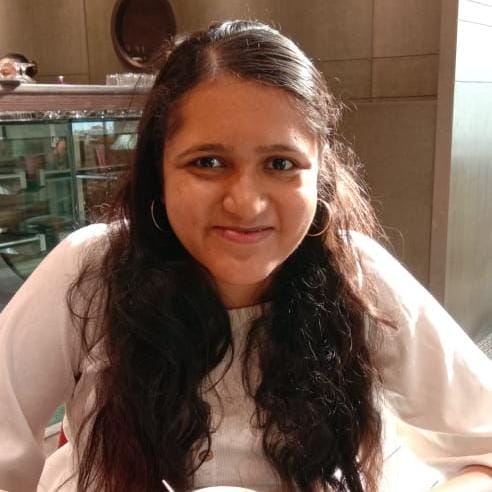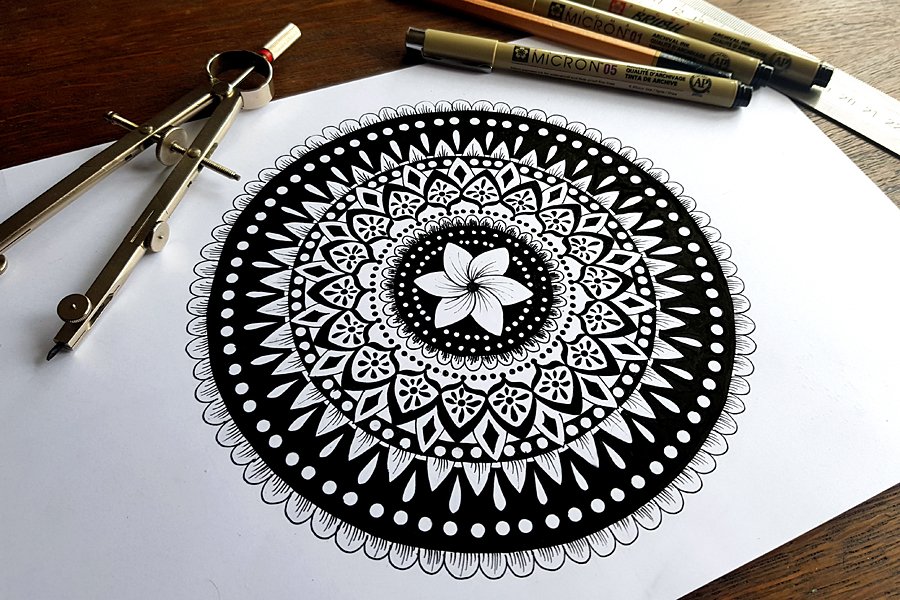Aruna Raghuram
Adult colouring books have become quite the rage these days. Among them, mandala colouring books are particularly popular. In these times of uncertainty, anxiety and isolation caused by the pandemic, drawing and colouring mandalas could prove beneficial for physical, mental and spiritual health.
Mandala means ‘sacred circle’ in Sanskrit. Mandalas are made up of intricate geometric patterns, yet colouring them requires no knowledge of art. It is best to start from the centre of the mandala and work outwards and select two to four colours to use for each design. Drawing one’s own mandalas requires some prior knowledge.
Richa Saxena is an Ahmedabad-based artist and teacher who specialises in mandalas. “I started making mandalas around four years ago. Initially, it was just a hobby. Now I am a full-time artist. I was intrigued by the detail in mandala patterns. Creating mandalas gives me a sense of peace and satisfaction. Small mandalas take two to three hours, while bigger ones take up to one week to complete,” she says.

She has taught more than 2000 students in the last three years. Richa accepts students over 10 years as they are able to grasp the art form easily. For children, she uses an easy medium like colour pencils, sketch pens or ballpoint pens.
Creating mandalas are both about focus and relaxation. They are known to stabilize blood pressure and relax the muscles as well as improve self-awareness and boost confidence. The activity relieves stress and enables a person to express their creativity at the same time. Drawing mandalas is said to help release emotional blockages. It reduces impulsive behaviour and increases attention span among children.
A study, ‘Can coloring mandalas reduce anxiety?’, published in the international journal Art Therapy, found that “structured colouring of a reasonably complex geometric pattern may induce a meditative state that benefits individuals suffering from anxiety”.
Explains art-based psychotherapist Khushboo Shah, who practises in Ahmedabad: “The design of a mandala has concentric circles around a central point. When we concentrate on that point it is very meditative and calming. It helps in healing. I teach my clients the basic concepts and then give them freedom to draw and colour their own mandalas. There is no right or wrong; good or bad.”

She relates a case study where a young adult came to her with difficulties in decision making. “Initially, she could not concentrate or even sit for a short relaxation exercise. Creating mandalas helped her focus and also open up. In art therapy, different colours activate different parts of the brain. Soon, the confusion cleared and she was able to act decisively,” says Khushboo.
While mandalas have been linked to both Hinduism and Buddhism, it is Swiss psychoanalyst Carl Jung who introduced them to the West. Jung studied mandalas and believed they had a deep association to psychological and spiritual health. To him, mandalas were representations of the unconscious self and gave people a “safe refuge of inner reconciliation and wholeness”.
Economics teacher and resident of Ahmedabad, Dr. Hema Ramani, spends two to three hours at a stretch colouring a mandala. A few years ago, she had a health setback. After a course of chemotherapy, she lost interest in activities she had enjoyed earlier. A friend suggested that she try adult colouring books.

This worked for her. Says Hema: “Mandala colouring helps me just be, without having to think too much. It has had two therapeutic benefits in my case. It has a remarkable calming influence on me. The activity of colouring also provides physiotherapy for my fingers. I enjoy the fact that there is freedom to experiment and there is no one judging my art work. Colouring mandalas makes me feel like a child once more!”












